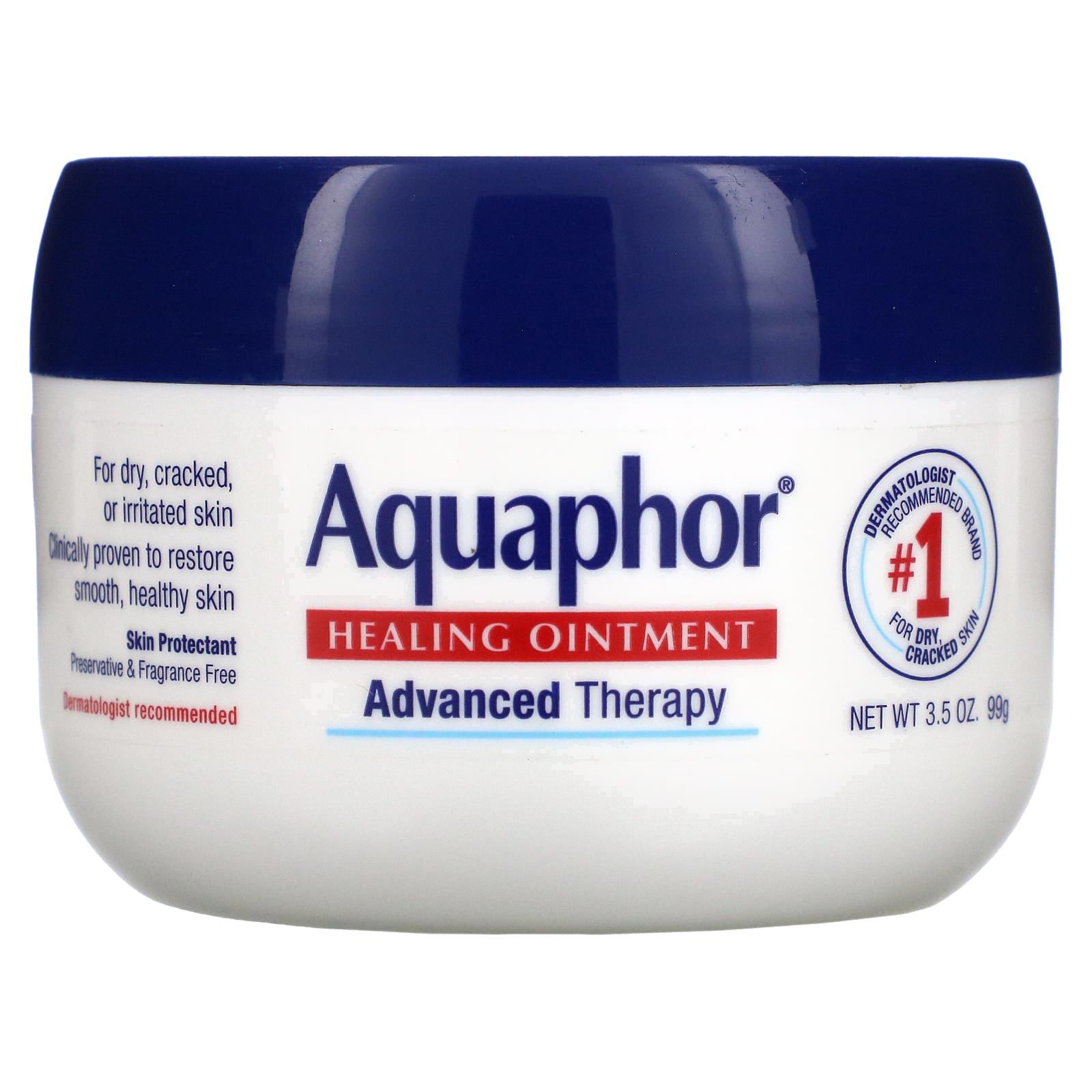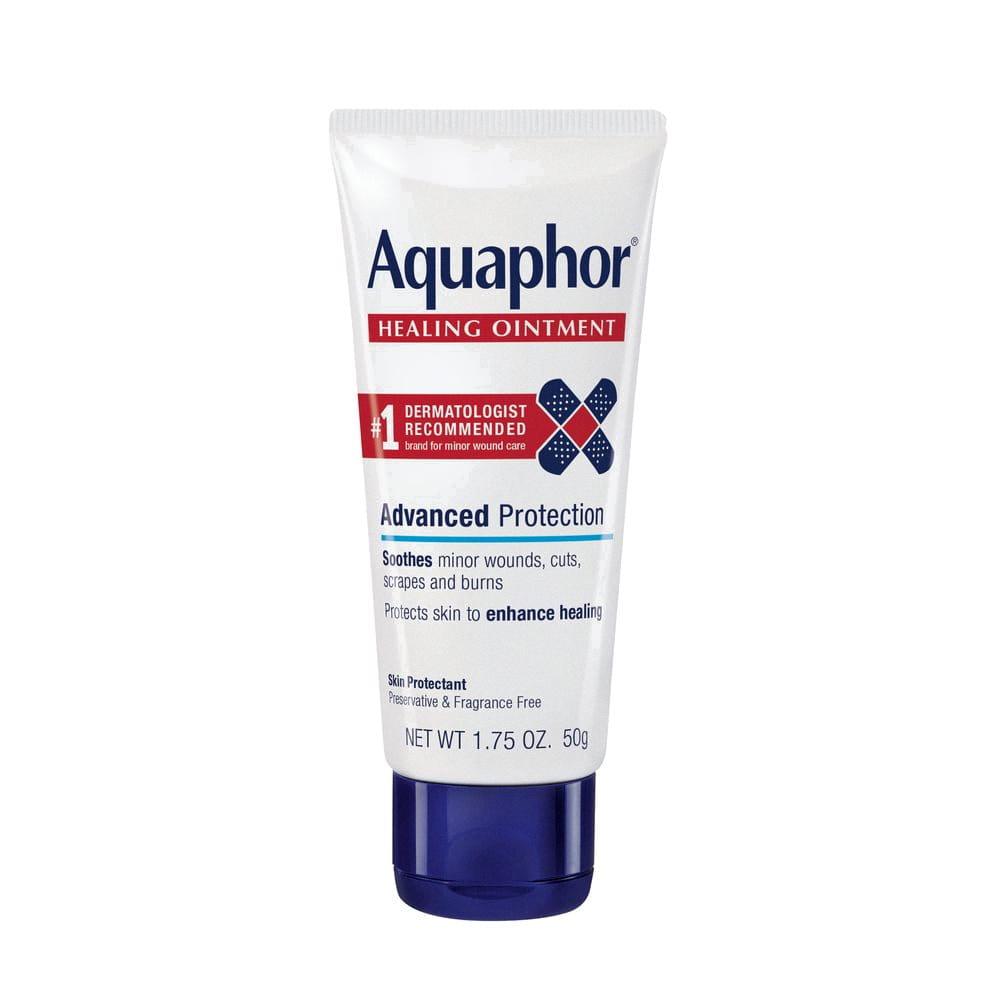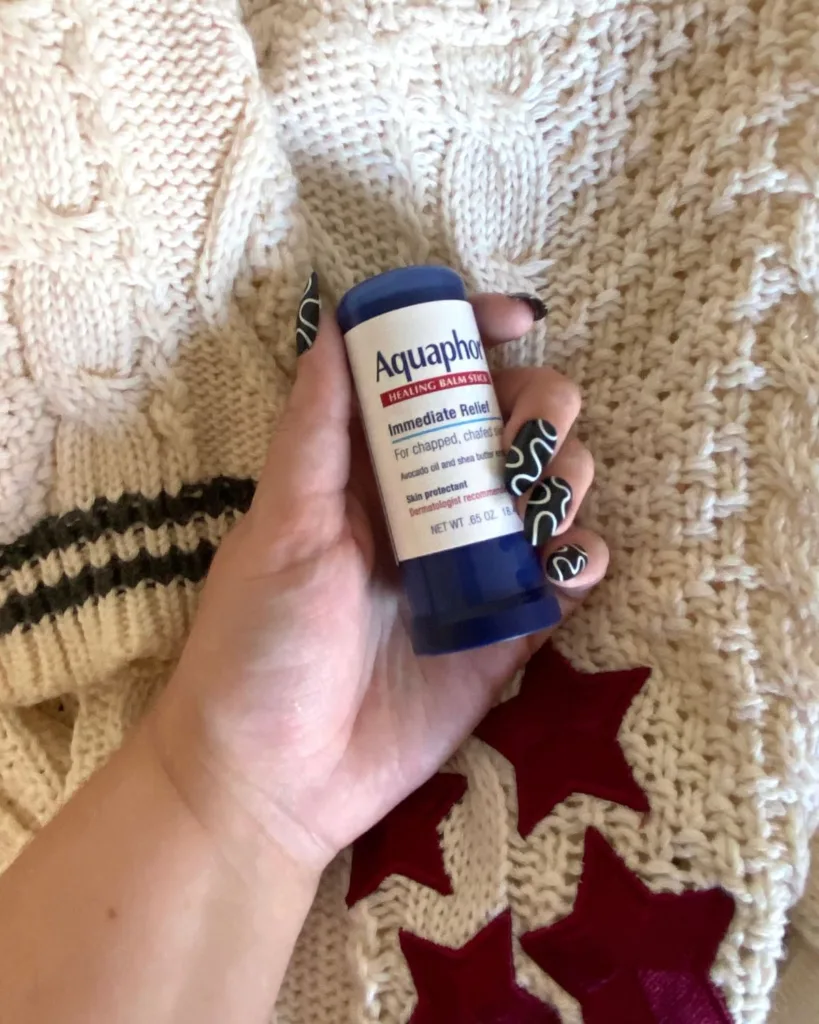Aquaphor is a multi-purpose skincare product that has been a fixture in people’s medicine cabinets for years. Not only is it great for treating dry and cracked skin, but it can also be used to soothe and protect the face. This makes it a popular choice amongst those looking to keep their skin looking healthy and youthful. So, can you put Aquaphor on your face? Absolutely!
Aquaphor is a healing ointment formulated with petrolatum, mineral oil, panthenol and glycerin. The petrolatum helps to create a barrier between the skin and outside elements which helps to lock in moisture as well as heal any minor cuts or scrapes. Mineral oil helps to soften and soothe the skin while panthenol provides an extra layer of moisture and glycerin helps with hydration. All of these ingredients work together to provide relief from dryness, irritation, redness, itching, or burning sensations.
If you want to use Aquaphor on your face, you should apply it after washing your face with a mild cleanser. For those with acne-prone or oily skin types, Aquaphor may be too occlusive for regular use; however it can be helpful in providing relief from occasional flare-ups or irritation caused by environmental factors such as wind or sun exposure. Applying Aquaphor at night before bedtime is also beneficial as it will lock in any other products you’ve applied during the day while promoting their benefits overnight.
Aside from its more traditional uses on the face, Aquaphor is also beneficial when applied topically on eyelashes and eyebrows as it helps strengthen them while making them look healthier and shinier. It should never be used on deep wounds, puncture wounds, animal bites or serious burns though – in these cases medical attention should always be sought out first.
In conclusion, Aquaphor can indeed be used on the face however users should take care not to overdo it if they have acne-prone or oily skin types as this could lead to furher breakouts or irritation. For those who don’t suffer from these conditions though; Aquaphor can make an excellent addition to their nightly skincare routine for added hydration benefits!
Using Aquaphor on the Face at Night
Yes, you can put Aquaphor on your face at night. This is often referred to as ‘slugging’ and involves applying a thick layer of Aquaphor over the skin after cleansing. This will help lock in moisture, as well as any other products that have been applied earlier in the day. In addition to this, it will help keep your skin hydrated and nourished, which can help reduce the appearance of wrinkles and fine lines. Aquaphor can also be used on eyelashes and eyebrows to strengthen them and give them a healthy shine.

Does Applying Aquaphor to the Face Cause Breakouts?
No, Aquaphor will not directly cause your skin to break out. It contains no known breakout-inducing ingredients and is non-comedogenic, meaning it won’t clog your pores or trigger acne. However, some people with acne-prone or oily skin may find it too occlusive and may want to use a lighter moisturizer instead. If you do decide to try Aquaphor on your face, apply a thin layer and see how your skin reacts before applying more.
Where Aquaphor Should Not Be Used
You should not use Aquaphor on deep wounds, puncture wounds, animal bites, or serious burns. Aquaphor is for topical use only and should not be used on these types of injuries. If you are unsure if an injury requires medical attention, please consult with a healthcare professional before using Aquaphor.
Which Is Better For The Face: Aquaphor or Vaseline?
Aquaphor is generally considered better for the face than Vaseline. Aquaphor contains humectant ingredients such as glycerin and lanolin, which help attract and retain moisture to the skin. It also forms a protective barrier on the surface of the skin, helping to reduce dryness and irritation. In contrast, Vaseline is only occlusive and does not cotain any humectant ingredients that can help draw moisture into the skin. While it can provide a barrier against irritants, it does not act as a moisturizer in itself. For this reason, Aquaphor is often recommended for people with sensitive or dry skin types, whereas Vaseline may be more suitable for people with normal or oily skin types.
How Long Should I Leave Aquaphor on My Face?
Aquaphor should be left on the skin for 10-15 minutes. It’s important to let the product absorb into your skin to maximize its hydrating and healing benefits. After applying Aquaphor to your face, wait 10-15 minutes before wiping off any excess with a soft cloth. Also, make sure not to rub or pull at the skin while removing the excess product as this can cause irritation and dryness.

Source: iherb.com
Removing Aquaphor from the Face
Answer: Aftercare for Profractional treatments may include the use of Aquaphor®. To get Aquaphor off your face, begin by gently wiping away any excess with a clean cotton pad or gauze. You can then rinse with warm water and pat your face dry with a soft towel. For any remaining residue, use a water-based cleanser or mild soap to further cleanse the area.
The Benefits of Using Aquaphor for Under Eye Care
Yes, Aquaphor is an excellent product for the under eye area. It helps to plump up lines by sealing in moisture, and it is non-irritating, making it ideal for sensitive skin. Applying a small amount of Aquaphor over your eye cream at night can help to reduce the appearance of wrinkles and fine lines. Additionally, Aquaphor helps to protect delicate skin from environmental damage and can even help to soothe irritation caused by dryness or allergies.
Do Dermatologists Recommend Aquaphor?
Most dermatologists consider Aquaphor to be a great option for treating dry skin. It is an occlusive, which means it helps to lock moisture in the skin. Additionally, it contains ingredients such as glycerin and lanolin which are humectants, helping to draw moisture into the skin. Its petrolatum base also helps create a barrier against irritants. All of these qualities make it an excellent choice for restoring and maintaining healthy hydration levels in the skin.
Side Effects of Aquaphor
Aquaphor is a skin protectant that can be used to soothe and moisturize dry, chapped, and irritated skin. While most people experience no side effects when using Aquaphor, some may experience mild redness, stinging, burning, or irritation where the product has been applied. If these effects worsen or persist for more than a few days, it is important to seek medical advice from your doctor or pharmacist. Additionally, if you have any known allergies or sensitivities to certain ingredients found in Aquaphor, it is important to check the product label and avoid using this product.

Source: aquaphorus.com
Comparing Aquaphor and Vaseline
Aquaphor Healing Ointment is a better choice than Vaseline in many ways. It contains ingredients beyond petroleum jelly, such as glycerin, panthenol and bisabolol, which make it much more effective at moisturizing the skin. It is also better suited for treating tattoos and providing lip care due to its humectant properties. Aquaphor is also non-comedogenic, which means it won’t clog pores like Vaseline can. Ultimately, Aquaphor Healing Ointment provides superior protection to skin and lips compared to Vaseline.
The Benefits of Slugging Your Face With Aquaphor
Slugging your face with Aquaphor helps to restore the skin’s natural barrier and keep moisture in. It works by providing an occlusive layer of petrolatum that forms a protective barrier on the skin. This barrier helps to prevent trans-epidermal water loss and keeps the skin hydrated and nourished, which can improve skin health, reduce inflammation, and soothe irritation. Additionally, it can help lock in moisture from other skincare products that are applied afterwards.
The Benefits of Slugging Skin
Skin slugging is a popular skincare technique used to treat dryness, dehydration and other skin issues. It involves applying an occlusive, such as petroleum jelly, a thick cream or oil, to the face afer cleansing and moisturizing. This helps to lock in moisture and create a barrier on the skin that prevents water loss. Skin slugging can be beneficial for people with dry skin as it helps keep moisture in the skin for longer periods of time. Additionally, it can also help reduce the appearance of wrinkles and fine lines as well as provide a protective layer against environmental stressors.
Is Aquaphor the Same as Vaseline?
No, Aquaphor is not just Vaseline. Aquaphor contains 41% petroleum jelly, compared to 100% in Vaseline. Additionally, Aquaphor includes other ingredients such as mineral oil, glycerin, and lanolin which help to moisturize the skin. These ingredients are not found in Vaseline and make Aquaphor a unique product.

Conclusion
In conclusion, Aquaphor is an excellent choice for skin care. Its unique blend of ingredients makes it great for use on the face, eyelashes and eyebrows, and other parts of the body. It helps to lock in moisture, strengthen hair and skin, and prevent acne breakouts. While it may be a bit too occlusive for those with oily or acne-prone skin, overall it is a great product to use regularly in your skincare routine.
